Huawei
Huawei P30 Lite: a mid-range with exemplary finishes
Aprox. 229€ - see price -
See specificationsWith its premium design, its triple rear photo module and its interesting technical sheet, the P30 Lite arrives on the market with ambitions. Enough to jostle Xiaomi?
Our review
Presentation
Updated 05/20/2019 at 02:20 PM
Attention, Google having ended its collaboration with Huawei / Honor, the future software of the launch mobiles is pending. We cannot advise you to invest in this mobile for the moment, its rating could be lowered soon.
After excellent P30 and P30 Pro, Huawei returns with a lighter version. Less ambitious, this P30 Lite is distinguished by a solid technical data carried by a premium design. Enough to make it a particularly interesting terminal on paper. Especially since it seems to display some pretensions on the side of the photo with its triple rear module, led by the famous 48 Mpx sensor.
Launched at € 369, this P30 Lite faces the Galaxy A50 from Samsung and the Mi 9 SE from Xiaomi, but also the Pocophone F1. Three major competitors.
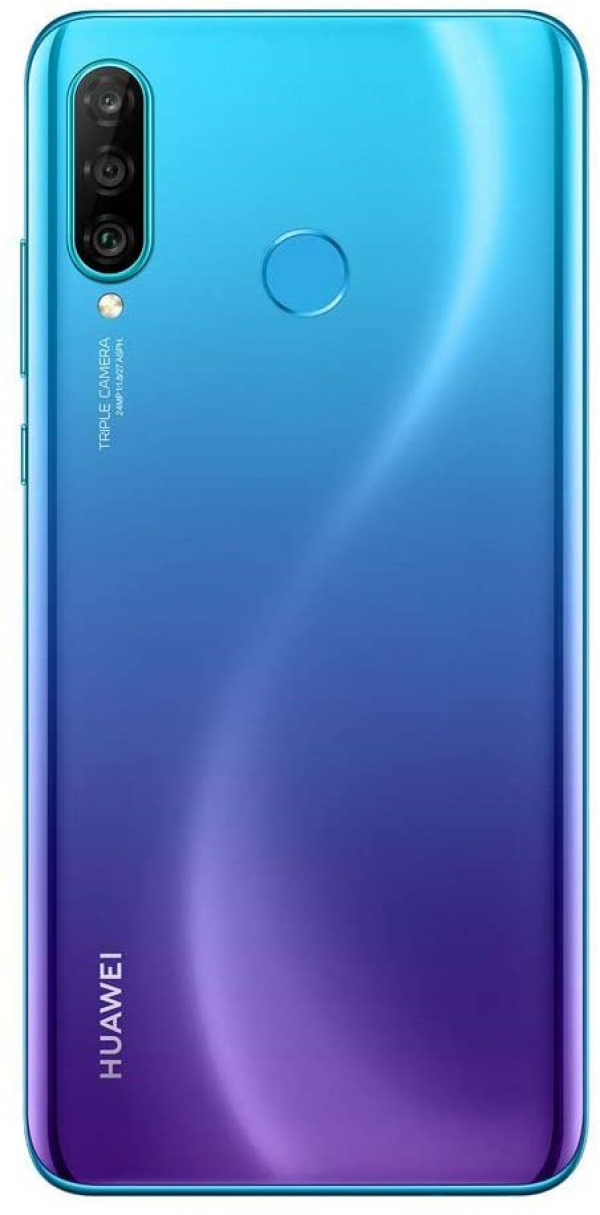
Ergonomics and design
With its P30 Lite, Huawei has refused to make aesthetic concessions. The terminal thus benefits from a finish that is as exemplary as it is pleasing to the eye. His back is the most beautiful effect. At the front, the 6.15 inch LTPS panel occupies 84% of the panel. On the upper edge, the teardrop notch is slightly smaller, allowing the screen to gain a few square millimeters.
Once in hand, the P30 Lite offers a completely satisfactory experience. The side buttons, located on the right edge of the smartphone are easily accessible, whether left or right handed. The same is true for the rear fingerprint sensor. If it's as reliable as the other P30s, it may be a little slower.
On its lower edge, the P30 Lite houses a USB-C connection, but also a 3.5 mm mini-jack socket. A significant presence because these sockets tend to disappear in favor of the USB-C. The terminal offers 128 GB of internal memory. Note that it is possible to give a little more space to all this, thanks to the port that can accommodate microSD cards up to 512 GB. Dual SIM, the P30 Lite is compatible with NFC, Wi-Fi 802.11ac, Bluetooth 4.2 and 4G + (cat. 13).
Unfortunately, the P30 Lite is not waterproof, but it's hard to blame it, few of its competitors in its price range are.
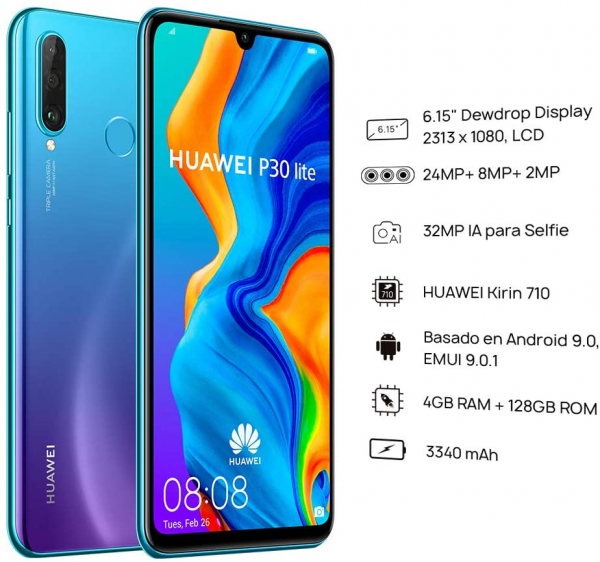
Screen
The P30 Lite offers a 6.15 inch LTPS panel, in 19: 9 format, displaying in 2 312 x 1080 px for a resolution of 415 ppi. It turns out to be of good quality. It is however necessary to take a quick tour in the parameters to get the best out of it. Once inside, click on "Display", then "Mode & Color temperature" before choosing the "Normal" profile and positioning the cursor yourself in the yellow.
This done, the P30 Lite panel offers impeccable colorimetry. Thanks to uniformly controlled tones, its average delta E is excellent (2,3) while the color temperature is positioned at 6,546 K flirting with the video standard of 6,500 K. Unfortunately, this beautiful table is marred by a rate fairly low contrast (997 : 1), IPS requires.
In terms of pure performance, the P30 Lite screen is one of the good students, with a maximum brightness of 472 cd / m² and minimum of 1 cd / m². What remain legible in all circumstances. Comfort well helped by the low reflectance of the slab (8%). Finally, its remanence time (18 ms) is satisfactory while its tactile delay (77 ms) places it slightly above the average.
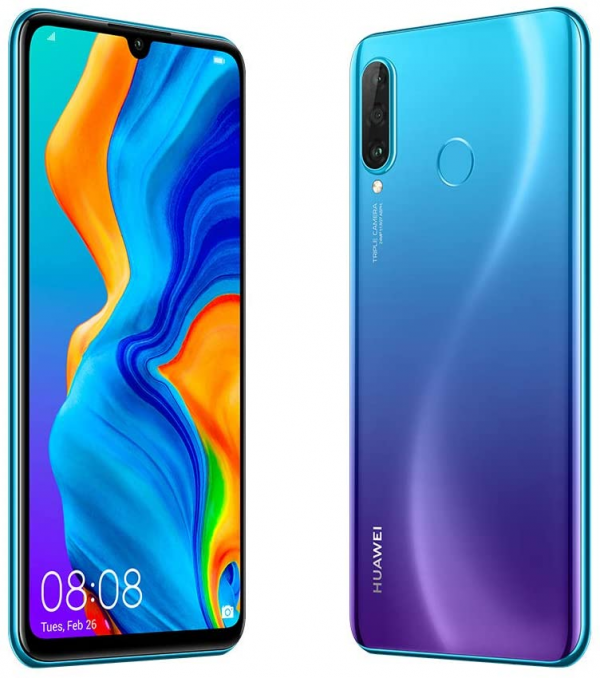
Performances
It is a Kirin 710 SoC based on eight ARM cores (4 x A73 at 2.73 GHz and 4 x A53 at 1.7 GHz) that drives the P30 Lite. A chip more than enough to run Android Pie. Enough also to juggle between applications without too many problems. In any situation, the smartphone manages to keep its cool and barely reaches 36.3 ° C after intensive use.
When launching a game, the iGPU Mali-G51 MP4 chip takes over. She manages, in front of greedy 3D games, to maintain a correct fluidity, without being transcendent on the side of graphics.
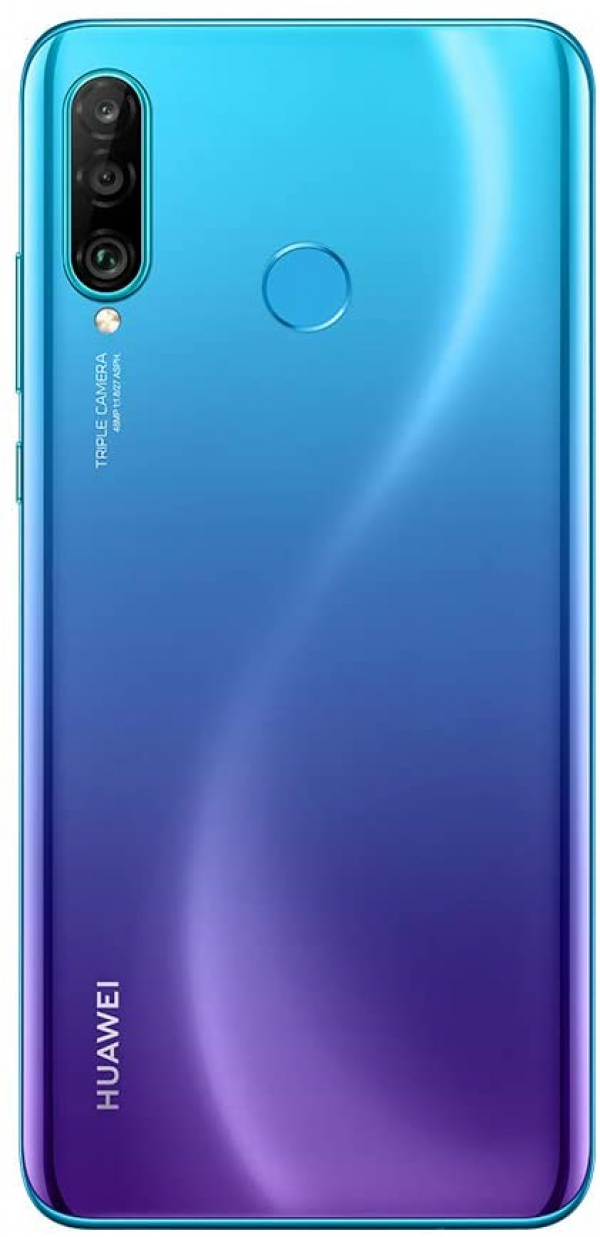
Audio
Regarding audio, the P30 Lite arrives with good and bad news. The good thing is that it accommodates a 3.5 mm mini-jack connector. The bad news is that it turns out to be very average. If it takes advantage of a fairly wide dynamic range and confines its distortion to a minimum, this is unfortunately not the case for crosstalk. The stereo scene is therefore poor on the side of the P30 Lite. In addition to that, the output power of the socket is quite low, and it will be put in difficulty by the slightest headset, even if it is a little energy-consuming.
Located on the bottom edge, the P30 Lite's speaker is barely average. Its output power turns out to be weak while the delivered sound turns out to be tight.
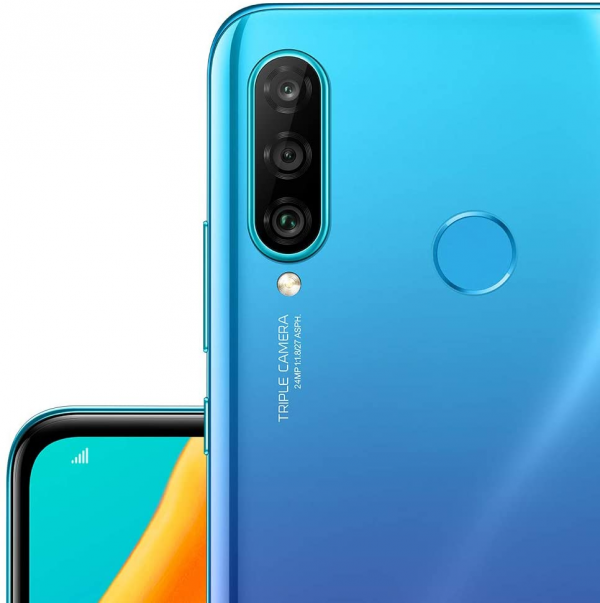
Photo
Like its brothers, the P30 Lite has a triple photo module on its back. However, it is arranged differently. Exit the 8 Mpx telephoto lens, instead, it is a module dedicated to the depth of field (2 Mpx), for portrait mode, which makes its appearance. The sensors are also different. There is thus a main sensor of 48 Mpx and an 8 Mpx sensor for the very wide angle. A slightly less hybrid configuration, but supported by an application that is still as fluid. This module combo places it as a direct competitor to the Mi 9 SE.
With the smartphone's default settings, the main module and its 48 MP sensor take 12 MP shots using the Pixel Binning technique. The goal is to combine pixels to capture more light. A process that we have already seen on the Mi 9 SE of Xiaomi or on the View 20 of Honor. Huawei's photo application also allows you to take photos directly in 48 MP. This allows you to gain slightly in detail and offers a certain latitude when cropping a photo.
By day, the main module of the P30 Lite takes a little too limited shots. The whole lacks sharpness, but especially of contrast. Fortunately, there is no deterioration at the periphery.
It is at night that the shoe pinches. The pictures are drowned in electronic noise and the colors, already bland by day, disappear. So we end up with a photo that is certainly readable, but not very usable, with areas that are completely blocked. Note, however, that it peaks at ISO 3,200, where Xiaomi's Mi 9 SE hovers at ISO 11,569. Anyway, under these conditions, the Galaxy A50 or the Pocophone F1 fare better.
It is when the landscape extends beyond the frame that the very wide-angle module is very practical. With its equivalent focal length 17 mm, its lens opening to f / 2.4 and its 8 MP sensor, it unfortunately offers photos of very average quality. During the day, the amount of detail and the contrast ratio are further reduced. We are also witnessing a real loss of quality at the periphery. What position it well below a Mi 9 SE.
At night, the result is this time close to catastrophic. Facing only 3 lux, the very wide angle of the P30 Lite loosens and offers a rendering buried under electronic noise, with a total loss of details. It's simple, you will not have to rely on its wide angle in the light of a candle.
A portrait mode is available on the P30 Lite photo application. Unfortunately, it turns out to be rather limited. Its impact is mainly felt on the back digital camera where the 2 MP module, dedicated to the depth of field allows to obtain a fairly successful progressive bokeh. On the other hand, this famous blurring effect which puts the subject forward is almost nonexistent on the front module. Too bad since this one, with its 24 Mpx sensor and its lens opening to f / 2.0, is quite good. The exposure is often well controlled and the backlights are fairly well managed.
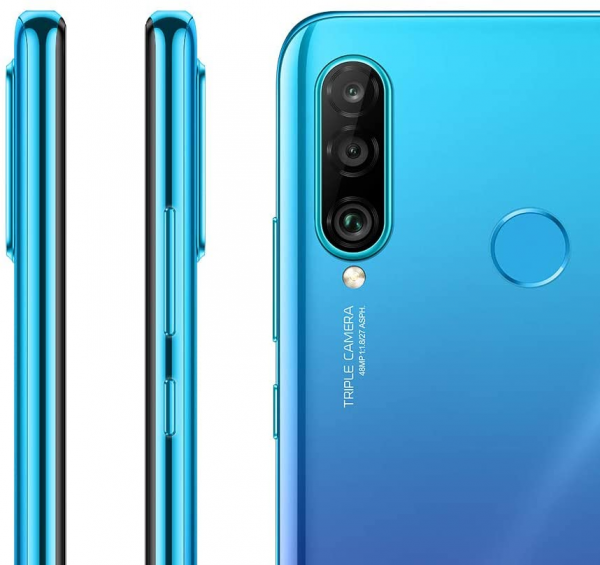
Autonomy
With its 3,340 mAh battery, the P30 Lite has average performance in autonomy. During our home autonomy test, which simulates normal smartphone use, the Chinese terminal lasted 15 h 48 min. In real conditions, this corresponds to just over two days of use. A good score in itself, but tarnished by those of direct competition. The P30 Lite looks very pale in front of Galaxy A50, Mi 9 SE or Pocophone F1 which offer a much better autonomy.
Note that 1 h 30 min is enough to fully charge the P30 Lite.
Conclusion
With its P30 Lite, Huawei offers a frustrating smartphone. Its finishes are exemplary, its slab, although IPS, is of good quality, and its performance remains sufficient for most uses. Unfortunately, the smartphone stumbles on the key sectors of autonomy and photography. It quickly shows its limits, and that's a shame .-- /! \ Warning, the future software of this phone is uncertain given the sanctions taken by the United States against Huawei. /! \
Specifications
Reviews

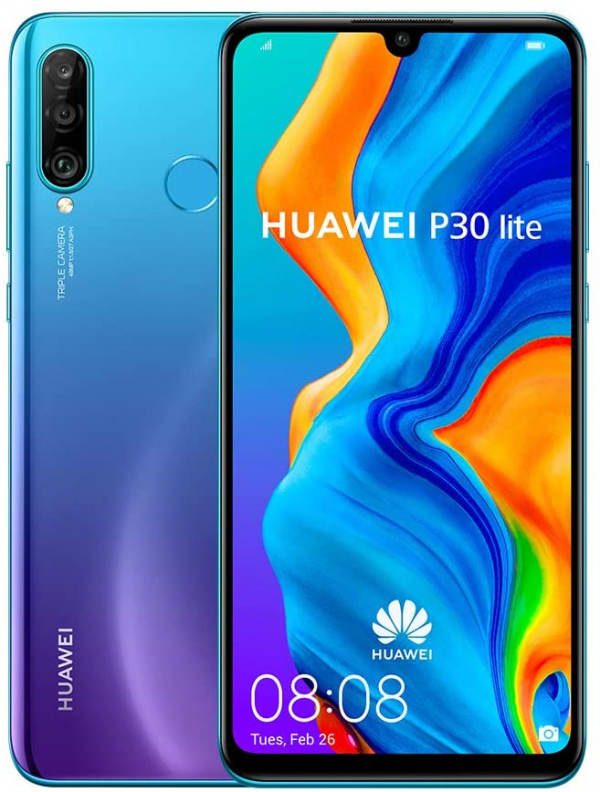
My wife seems to love the phone
She particularly loves how well the selfie camera seems to make her look. Smh things that women find important.
Love the huge internal storage best
My old phone with 16 gb worked very well for me last three years, but my usage started to demand more storage. The price is right for this 128 gb phone. I had it for one day now. Overall, I am quite happy with it. The lag time doing in negotiation is quite negligible to me and flow is quite smooth. I do not know how good the camera is, although the few pictures and videos I took were quite acceptable. I generally used a Canon SLR camera for photos, and this is just to be used for quickie and convenient use only. It did not detect my 5g or AC wifi, but somebody in the review has always pointed out, so it is within my expectation. Using speedtest with 2.4ghz wifi, I got 74.7 mbps download speed. I am not sure if it is just my cloud content or it is Google problem, but I like to warn that if you Google backup to install all the apps previously installed in the other phone, it created a display sleep problem. The phone would go to sleep every eight seconds if there was no activity, no matter what battery performance or sleep timeout setting I changed to. I had to solve the problem by resetting the phone to the original factory setting and reinstalling each application manually one by one through the play store. I got the solution from other users in the internet having the similar problem with Huawei phone and other brands phones so this maybe a common problem with the Google backup. Likely, it could be the content stored in this backup, but I do not care to find out as I do not have the problem any more. It also seems that I have an easier time to synchronize the windows 10 contact and calendar apps through the outlook.com with the phone built-in contact and calendar apps, than my old phone. It took me about three hours to re-install all the apps, about 40 of them and to complete the email, contact and calendar setups.
Decent phone, maybe more than decent
I was one of the last holdouts with a windows phone, and knew I had to buy something to replace it. I had android years ago, so I thought I would just go back to it, plus apple doesn't make products in this price range really. My biggest fear was trying to transfer data, and it did prove to be trying and not completely successful. Got photos, music (had to buy a converter from wma to aac format) and my ringtone ok. Only got sms texts transferred using an app, but lost my mms and contacts. Oh well, I just made do. I am a very light smart phone user so ..... not a big deal.
This phone itself, I really like. Ultimately popped in the sim card from windows phone and this one took off. Screen is great for me, I got my apps loaded and I am very satisfied with this phone. Photos are certainly good enough. I cannot seem to figure out how to get a shadow screen to open up when I take it out of my pocket, I always have to push the button. Probably a security thing. I don't use the fingerprint scanner, opted out of that so I cannot comment on it. Like that it has a headphone jack, and I added a 128 sd card.
I am a light user of this phone. I am not on it constantly. Probably twenty texts a day, the occasional phone call, some news reading, etc. So far the battery has lasted days for me. At least 3, and I was still at 40%. I turn off location, bluetooth and notifications since I don't use them daily and I am sure that helps with the battery.
This phone is faster than my nokia windows phone (950) which was one of their better phones at the time. For under $ 300 I think this is a fantastic phone. My understanding is that this phone will be supported into the future, even if Huawei is banned from Google support, as a kind of grandfathering for products already in consumer hands. It is a pretty phone (peacock blue) and feels solid to me. I wouldn't hesitate to buy another.
UPDATE 8/27/2019 As this is an international version, the android stuff is not as up to snuff as getting a US Version phone from ATT. One thing that I noticed after some use which bugged me, is that the resolution of the attached photos I would send in the messaging app was very poor. Blurry and no detail, it really toned down the resolution. The answer was to change messaging apps from the stock android to something else. I tried TEXTRA, and voila, the photo resolution improved immensely. Problem solved.
Overall nice phone for the price good picture quality
I really like this phone. The features on this phone are pretty cool. I love the phone clone app that allowed me to download my call logs and text messages from my old phone. Also I have AT&T service and I did not need to call AT&T to activate my phone I just put in the SIM card and the phone worked. I like the features of the scrolling screenshot and the time limit that you can set on screen time. the camera on this phone is much better then the camera on my LG Stylo 4 I had previously. However the camera is not as good as my husband's LG G5. Setting up the fingerprint scanner was easy and fast and I like that it allows me fast access to the phone. Overall I am giving this phone 5 stars. also as a side note the case and screen protector that is included with the phone and the headphones are not the greatest quality but they are good enough to get you started and hold you over until your case arrives. I ordered a love mei case to go with this phone and it is an excellent fit.